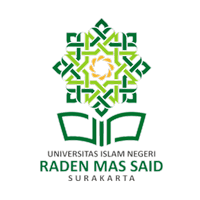Integration of Local Traditions in Language Teaching: A Case Study of the Sadranan Tradition in Klarisan as a Medium for Cultural Literacy
Contributors
Ika Martanti Mulyawati
Keywords
Proceeding
Track
General Track
License
Copyright (c) 2025 International Conference on Cultures & Languages

This work is licensed under a Creative Commons Attribution-NonCommercial-NoDerivatives 4.0 International License.
Abstract
The wave of globalization poses significant challenges to the preservation of local traditions. One tradition that remains well-preserved is Sadranan in Dusun Klarisan, Tanduk Village, Ampel District, Boyolali Regency, which is held twice a year during the months of Ruwah and Safar. The series of activities includes grave cleaning, communal prayers, tumpeng feasts, and social gatherings, all of which embody values of gratitude, respect for ancestors, social solidarity, and belief in blessings. This tradition is highly relevant to be integrated into language learning in the Indonesian Language Education program as a medium for fostering cultural literacy. This study aims to describe the implementation and cultural significance of Sadranan and to outline strategies for its integration into Indonesian language teaching at the university level. Employing a descriptive qualitative approach, data were collected through participatory observation, in-depth interviews with community leaders and residents, and documentation. Data analysis followed Miles, Huberman, and Saldaña’s interactive model, consisting of data reduction, display, and conclusion drawing. The findings reveal that integrating Sadranan into contextual learning strengthens students’ language skills (listening, speaking, reading, writing) while enhancing their cultural competence. Students not only acquire linguistic skills but also connect them with social and cultural contexts, in line with the principles of Contextual Teaching and Learning. It is concluded that Sadranan serves a dual role as a cultural heritage that strengthens local identity and as an effective pedagogical tool for developing cultural literacy and language proficiency

